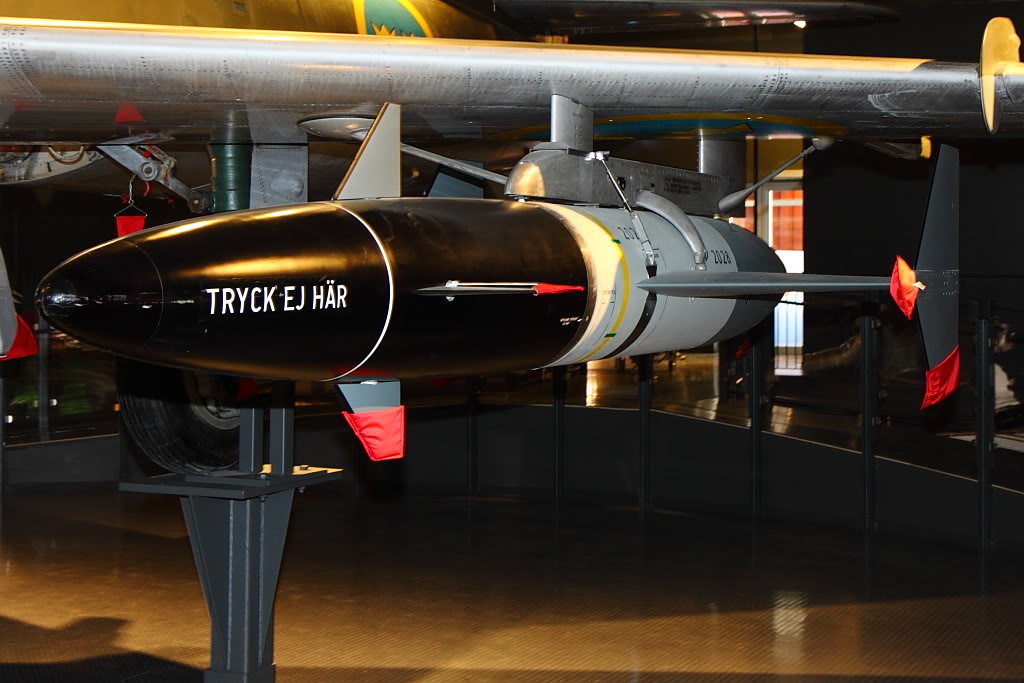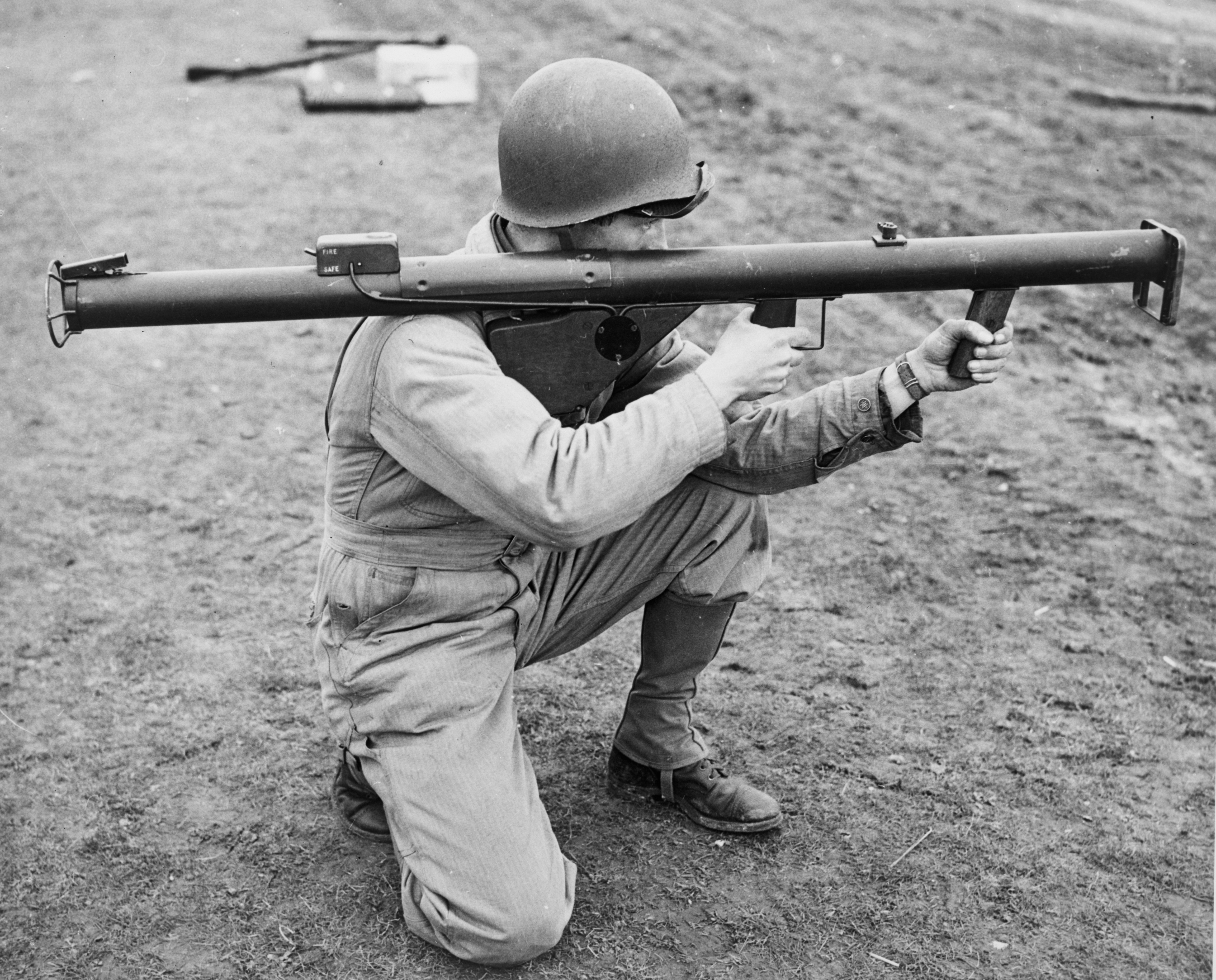|
RBS15
The RBS 15 (Robotsystem 15) is a long-range fire-and-forget surface-to-surface and air-to-surface anti-ship missile. The later version Mk. IV has the ability to attack land targets as well. The missile was developed by the Swedish company Saab Bofors Dynamics. History The Swedish Navy earlier made the RB 08 anti-ship missiles with the Halland-class destroyers in the early 1960s. The main effect of Sweden's defence resolution of 1958 for the Swedish navy was restructuring into a lighter force consisting of fast attack craft (FAC) vessels and a halt to destroyer procurement. This posed a problem as the existing RB 08 missile required launch rails and a missile magazine in the destroyers, taking up space that was not available in smaller ships. Adding to the problems, each missile had to be individually prepared for launch and only two missiles could be on the launch rails at the same time. In comparison, the P-15 Termit (NATO codename Styx) missile used by the Soviet Union fro ... [...More Info...] [...Related Items...] OR: [Wikipedia] [Google] [Baidu] |
Land-attack Missile
A land-attack missile (LAM) is a naval surface-to-surface missile that is capable of effectively attacking targets ashore, unlike specialized anti-ship missiles, which are optimized for striking other ships. Some dual-role missiles are suitable for both missions. Like long-range anti-ship missiles, land-attack missiles are usually turbojet or turbofan powered cruise missiles. To prevent early detection and counter-measures, they usually fly near the ground at very low altitude, employing terrain-following techniques, either with terrain-following radar or with precise navigation system, like GPS, combined with a stored map of obstacles and ground elevation data (TERCOM). Land-attack missiles are usually programmed before launch to follow a set of way-points up to the target. Terminal guidance can be done with active radar homing, passive radar or electronic warfare support measures, infrared homing Infrared homing is a Missile guidance#Passive homing, passive weapon g ... [...More Info...] [...Related Items...] OR: [Wikipedia] [Google] [Baidu] |
Surface To Surface Missile
A surface-to-surface missile (SSM) is a missile designed to be launched from the ground or the sea and strike targets on land or at sea. They may be fired from hand-held or vehicle mounted devices, from fixed installations, or from a ship. They are often powered by a rocket engine or sometimes fired by an explosive charge, since the launching platform is typically stationary or moving slowly. They usually have fins and/or wings for lift and stability, although hyper-velocity or short-ranged missiles may use body lift or fly a ballistic trajectory. The first operational surface-to-surface missile was the V-1 flying bomb, it was powered by a pulsejet engine. Contemporary surface-to-surface missiles are usually guided. An unguided surface-to-surface missile is usually referred to as a rocket (for example, an RPG-7 or M72 LAW is an anti-tank rocket), whereas a BGM-71 TOW or AT-2 Swatter is an anti-tank guided missile. Examples of surface-to-surface missile include the MGM-140 ATA ... [...More Info...] [...Related Items...] OR: [Wikipedia] [Google] [Baidu] |
Missile Launchers
A rocket launcher is a weapon that launches an unguided, rocket-propelled projectile. History The earliest rocket launchers documented in imperial China consisted of arrows modified by the attachment of a rocket motor to the shaft a few inches behind the arrowhead. The rocket was propelled by the burning of the black powder in the motor; these should not be confused with early fire arrows, which were conventional arrows carrying small tubes of black powder as an incendiary that ignited only after the arrow hit its target. The rocket launchers were constructed of wood, basketry, and bamboo tubes. The launchers divided the rockets with frames meant to keep them separated, and the launchers were capable of firing multiple rockets at once. Textual evidence and illustrations of various early rocket launchers are found in the 1510 edition of the ''Wujing Zongyao'' translated by Needham and others at Princeton University. (The original ''Wujing Zongyao'' was compiled between 104 ... [...More Info...] [...Related Items...] OR: [Wikipedia] [Google] [Baidu] |
Harpoon Missile
The Harpoon is an all-weather, over-the-horizon, anti-ship missile manufactured by McDonnell Douglas (now Boeing Defense, Space & Security). The AGM-84E Standoff Land Attack Missile (SLAM) and later AGM-84H/K SLAM-ER (Standoff Land Attack Missile – Expanded Response) are cruise missile variants. The regular Harpoon uses active radar homing and flies just above the water to evade defenses. The missile can be launched from: * Fixed-wing aircraft (AGM-84), without the solid-fuel rocket booster * Surface ships (RGM-84), fitted with a solid-fuel rocket booster that detaches when expended, to allow the missile's main turbojet to maintain flight * Submarines (UGM-84), fitted with a solid-fuel rocket booster and encapsulated in a container to enable submerged launch through a torpedo tube * Coastal defense batteries (RGM-84), from which it would be fired with a solid-fuel rocket booster Development In 1965, the United States Navy began studies for a missile in the range cl ... [...More Info...] [...Related Items...] OR: [Wikipedia] [Google] [Baidu] |
HMS Smaland, Radar And Missiles
HMS or hms may refer to: Education * Habib Medical School, of the Islamic University in Uganda * Hartley–Melvin–Sanborn Community School District of Iowa, United States * Harvard Medical School of Harvard University * Heidelberg Middle School, a former American school in Heidelberg, Germany * Hongwanji Mission School, in Hawaii, United States * Horley Methodist School, Teluk Intan, in Malaysia Medicine and science * Hartford Medical Society, an American professional association based in Hartford, Connecticut * Health management system * Hexose monophosphate shunt, an alternative name for the pentose phosphate pathway * Highly migratory species, a classification of fish * Hypermobility spectrum disorder, formerly hypermobility syndrome or HMS * HMS, a brand name of medrysone Technology * Huawei Mobile Services, proprietary apps and services from Huawei bundled with Android devices * HMS Networks, a company in the field of industrial communications * Heavy meltin ... [...More Info...] [...Related Items...] OR: [Wikipedia] [Google] [Baidu] |
P-15 Termit
The P-15 ''Termit'' (; ) is an anti-ship missile developed by the Soviet Union's Raduga design bureau in the 1950s. Its GRAU designation was 4K40, its NATO reporting name was ''Styx'' or SS-N-2. China acquired the design in 1958 and created at least four versions: the CSS-N-1 ''Scrubbrush'' and CSS-N-2 versions were developed for ship-launched operation, while the CSS-C-2 ''Silkworm'' and CSS-C-3 ''Seersucker'' were used for coastal defence. Other names for this basic type of missile include: HY-1, SY-1, and FL-1 ''Flying Dragon'' ( Chinese designations typically differ for export and domestic use, even for otherwise identical equipment), North Korean local produced KN-1 or KN-01, derived from both Silkworm variants and Russian & USSR P-15, Rubezh, P-20 P-22 . Despite its large size, thousands of P-15s were built and installed on many classes of ships from torpedo boats to destroyers, and coastal batteries and bomber aircraft (Chinese versions). Origins The P-15 was not the ... [...More Info...] [...Related Items...] OR: [Wikipedia] [Google] [Baidu] |
Halland-class Destroyer
The ''Halland''-class destroyers were two ships built for the Swedish Navy in the 1950s. Four ships were planned, but the second pair were canceled. Two modified ships were exported to the Colombian Navy. These vessels were general purpose surface combatants. Design These were general purpose ships with strong anti-submarine and anti-surface warfare armament. They were re-fitted in the 1960s and re-armed with Saab Rb 08 anti-ship missiles (a missile derivative of the Nord Aviation CT20 drone). The Colombian ships had a more anti-surface focused armament. Ships Swedish Navy * , built by Götaverken, Gothenburg. Commissioned 1955. Decommissioned 1982, scrapped 1985. * , built by Eriksberg, Gothenburg. Commissioned 1956. Decommissioned 1979, now a museum ship in Gothenburg. * HSwMS ''Lappland'', cancelled 1958. * HSwMS ''Värmland'', cancelled 1958. Colombian Navy * (ex-''Trece de Junio'') (D 06), built by Götaverken, Gothenburg. Commissioned 1958. Decommissioned 1986, scrapp ... [...More Info...] [...Related Items...] OR: [Wikipedia] [Google] [Baidu] |
Saab Rb 08
Robot 08 (Rb 08) was an anti-ship missile developed in Sweden by Saab during the early Cold War. It was the first operational ship-based anti-ship missile. The design was a development of the French Nord Aviation CT20 target missile and was manufactured by Saab. The project to develop the weapon was initiated in the 1950s and the missile entered sea-going service in 1966 aboard the s, later also serving in a land-based coastal defense role with the Swedish Coastal Artillery. Guidance was via radio command and active radar homing. The missile was replaced by the RBS-15, being retired in 1995. Development The Royal Swedish Naval Materiel Administration experimented in the 1950s with the development of an anti-ship missile, with the project name M20. Disputes with the Air Force Materiel Administration over responsibility for missile development prolonged the development. Therefore, in 1962 the Naval Materiel Administration directed Saab to develop an anti-ship version of Nord Avia ... [...More Info...] [...Related Items...] OR: [Wikipedia] [Google] [Baidu] |
Swedish Navy
The Swedish Navy () is the maritime service branch of the Swedish Armed Forces. It is composed of surface and submarine naval units – the Fleet (), formally sometimes referred to as the Royal Navy () – as well as marine units, the Amphibious Corps (). Founded under King Gustav Vasa in 1522, the Swedish navy is one of the oldest continuously serving navies in the world, celebrating its 500th anniversary in 2022. History Early Swedish kings ( 9th–14th centuries) organised a Swedish Navy along the coastline through . This involved combined rowing and sailing ships (without artillery). This system became obsolete with the development of society and changes in military technology. No later than in the 14th century, the duty to serve in was replaced by a tax. In 1427, when Sweden was part of the Kalmar Union (with Denmark and Norway), Swedish warships did however participate in the naval battle of Öresund against the Hanseatic League. It is unclear how this force was ... [...More Info...] [...Related Items...] OR: [Wikipedia] [Google] [Baidu] |




